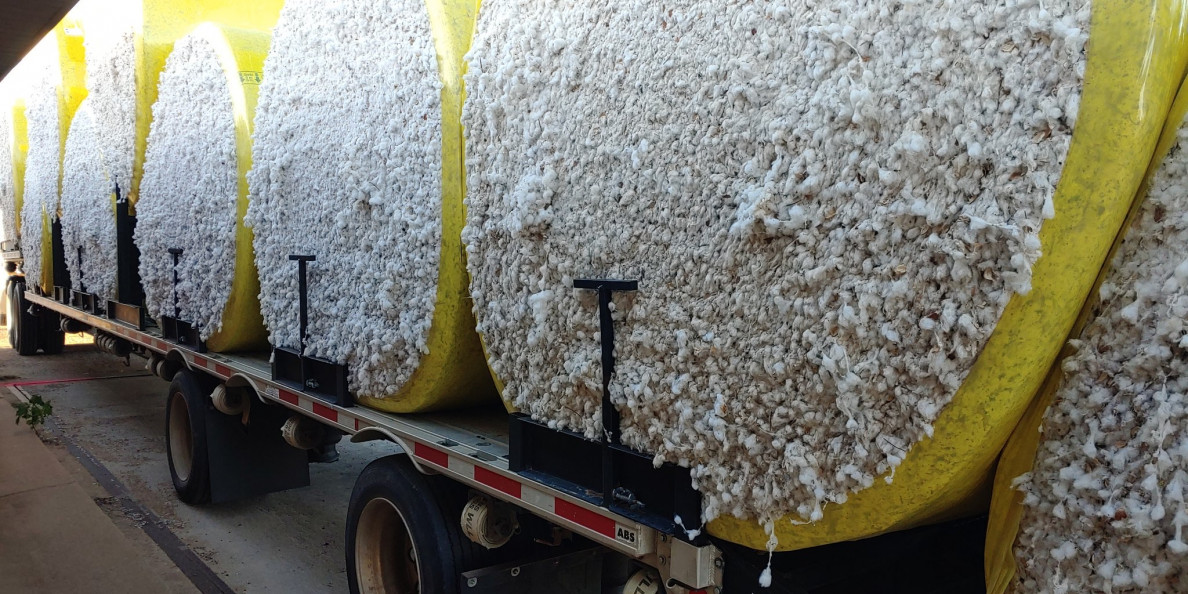The week ending Friday, December 3 saw an eight cent downhill slide of Mar’22 ICE cotton futures settlements, which Friday was 104.20 cents per pound (see chart above courtesy of Barchart.com). Cotton futures, along with other financial markets, initially reacted bearishly to the news of the omicron covid variant before moderating as the week went on. Daily open interest in ICE cotton futures declined along with prices, suggested speculative long liquidation. Indeed, the regular Tuesday snapshot (through November 30) showed 7,975 fewer hedge fund longs and 2,159 fewer index fund longs, week over week. In addition, the data showed a weekly increase in outright hedge fund shorts of 1,010 contracts.

Chinese and world cotton prices also declined across the week. In related markets, CBOT corn and soybeans fell early but finished the week in more of a V-shaped recovery pattern. The U.S. dollar index zig-zagged sideways, with decreasing volatility across the week. All of these markets appeared to display a similar moderating reaction to the recent pandemic news.
Cotton-specific fundamental factors this week included a strong weekly U.S. cotton export sales report and progress towards completion of the U.S. cotton harvest. U.S. cotton certified stock levels recovered a little but remain at low levels.
The movement of ICE cotton futures has implications for potential hedging strategies. The price volatility in 2021 is a reminder why it is risky to hedge by selling futures, and it’s also made some option premiums more expensive. As new crop Jul’22 cotton futures risen in the last few months, a near-the-money 85 call option has increased in value. Between September 23 and December 2, an 85 call option on July’22 rose from 9.45 cents to 18.20 cents per pound. Had it been purchased in the previous months (i.e., back when some new crop was being cash contracted in the mid-80s), the current uptrend clearly illustrates the insurance aspect of call options. In general, a call option represents upside price risk protection, in combination with cash contracting or selling futures. Looking further out, the rising new crop Dec’22 futures contract has resulted in an out-of-the-money 80 cent put option premium declining from fourteen cents in January to 5.16 cents per pound by December 2. It was even cheaper when Dec’22 was trading in the low 90s. That is, once purchased, this position acts as a buffer against unexpected declines in Dec’22 futures by increasing in value.
For more details and data on Old Crop and New Crop fundamentals, plus other near term influences, follow these links (or the drop-down menus above) to those sub-pages.
Πηγή: tamu.edu

